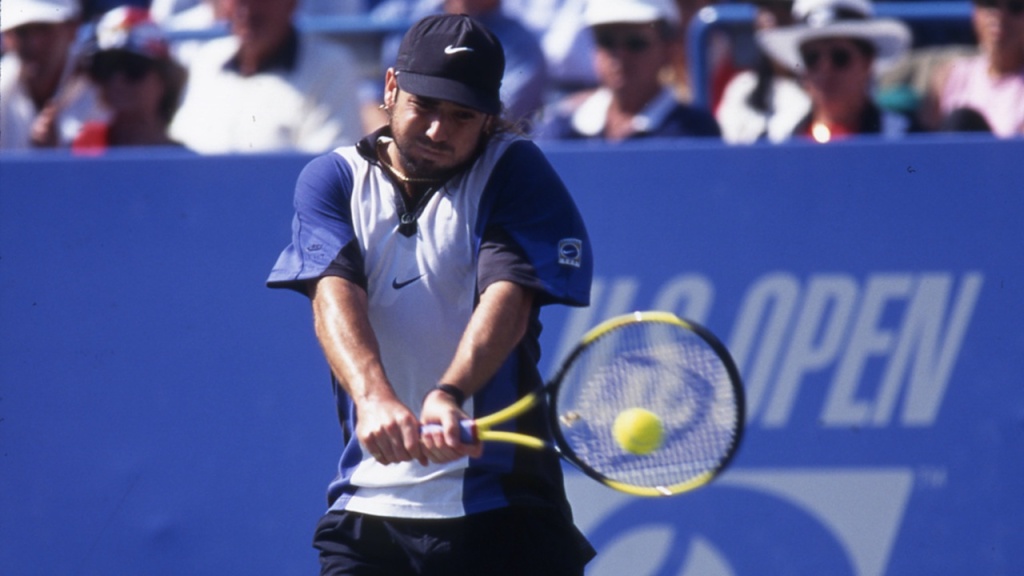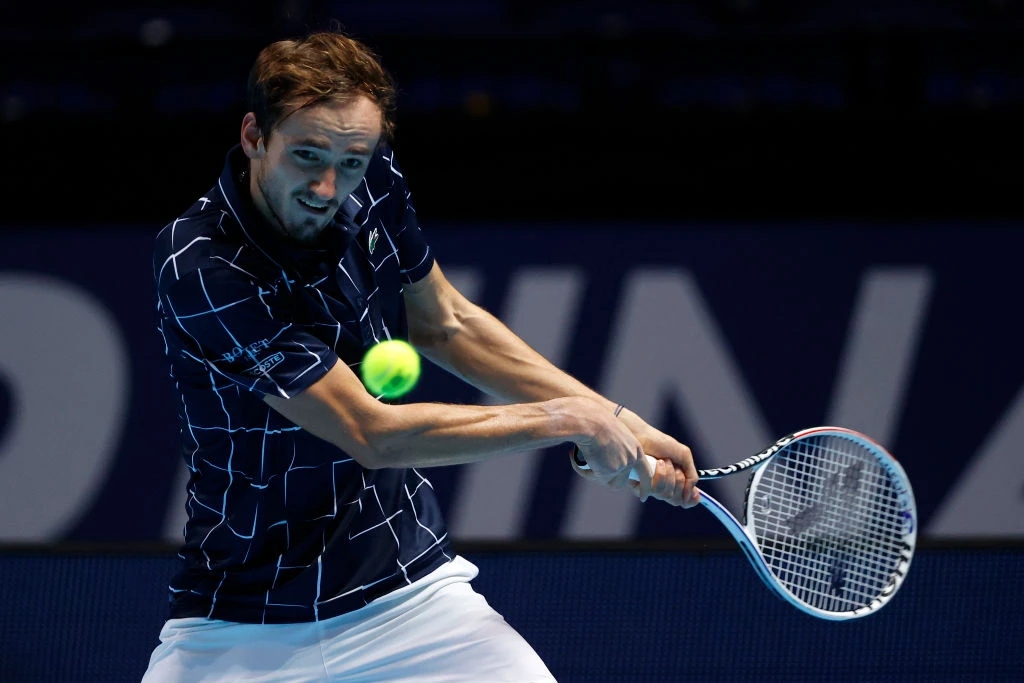Thoughts on the decline of the single hander
Posted: June 27, 2023 Filed under: Uncategorized | Tags: athletic talents, ATP, Backhand, Forehand, Sport, Tennis Leave a commentFor any long-time fan of the ATP tour, it has been hard to ignore the consistent decline of the single handed backhand. Someone who followed the ATP in the 1990s and early to mid 2000s would likely have been a fan of some of the following players: Pete Sampras, Andre Agassi, Ivan Lendl, Boris Becker, Yevgeny Kafelnikov, Stefan Edberg, Marat Safin, Gustavo Kuerten, Carlos Moya, Goran Ivanisevic, Lleyton Hewitt, Tommy Haas, etc – in other words, a fairly even spread of single and double handed backhands. Since the mid-2000s, the number of single-handed players in the year-end top 10 has steadily declined: four in 2007; two in 2008; one in 2009; two in 2010-2012; three in 2013 and never more than 3 since then. Following Federer’s exit from the top 10 in July 2022, only Stefanos Tsitsipas has sat inside the top 5. At the time of writing this article, the next highest ranked single hander is Lorenzo Musetti, at number 15. In the top 50, there are only Grigor Dimitrov (age 32), Denis Shapovalov (whose ranking is rapidly dropping), Dan Evans (age 33 and falling in the rankings) and Richard Gasquet (ranked 49 and nearing retirement at 37 years old).

Here are some reasons why:
The increased speed and spin of the average rally ball
While there are not any official statistics on the average speed of topspin groundstrokes in the ATP, it is quite clear that players are, on average, hitting their forehands and backhands at a consistently higher pace than ever before. The increased incoming speed gives players less time to prepare their shots and encourages shorter and more compact groundstrokes. Novak Djokovic has won 23 Grand Slams off his ability to absorb pace, defend his backhand corner and re-direct the ball better than anyone else, and a large part of this is his compact, clean and simple two-handed backhand. The player who succeeds in today’s tennis is one who can best maintain hitting deep and powerful groundstrokes without coughing up an error or easy short ball – often referred to as having a high shot tolerance.

Return of Serve
With the great importance of shot tolerance in today’s game, it becomes vital to have the ability to attack the opponent’s second serve, and to dole out the first strike. The vast majority of second serves at a professional level are kick serves directed at the opponents backhand, which puts the ball at an uncomfortable height for the single-hander. The double hander, by contrast, is more suited to crushing higher balls.
Likewise, the best returners of first serves in the modern era have all had two-handed backhands – the second hand giving much needed stability when returning a ball which is struck anywhere between 110-140MPH, and giving the player the option of re-directing the pace back at the opponent. The single hander will generally slice back big first serves, which does not pose the same threat.
Homogenisation of playing surfaces
Much has been written about the decision to homogenise the playing speed of different surfaces on the professional tour. In short; the fastest surfaces have either been phased out (indoor carpet) or changes have been made to the construction of the surface to reduce its playing speed (grass). Conversely, clay courts now play faster than they did in the past, and clay specialists are a relative rarity – a player strong on clay will easily be able to adapt his game to hard courts. Additionally, fast hard courts are now a rarity, and many professionals have commented that the average hard court is now just as slow as a clay court.
Historically, quicker courts (grass and carpet) encouraged players to keep the ball low and to approach the net as often as they could. In these conditions, there are advantages to having a single handed backhand – it is easier to transition to the slice for low balls and approach shots, and many serve and volley players used a single handed backhand for this (among other) reasons. Likewise, clay court players of the past had more time on the ball, and therefore a longer stroke with greater spin potential (the one hander) had much more utility
While there are still pronounced differences to playing on each surface – chiefly movement – one can no longer speak of grass or clay specialists, and watching Roland Garros and Wimbledon back to back, it is largely the same type of tennis played at both tournaments.
Junior coaching
A by-product of this homogenisation is that it is now much clearer to coaches of high-level juniors exactly what style of play will give the greatest chance of success on the professional circuit. Tennis is an extremely difficult sport in which to reach top 100 in the world – almost every major country has a developed tennis program, but unlike other popular global sports (football, cricket, etc), tennis is an individual sport, meaning there can be far fewer winners and also less professionals who can make a basic living. Under this immense pressure to succeed, it is quite normal that coaches and parents of high-performance juniors will opt for the technique and game style which will lead to the highest chance of success.
And what for the audience?

So far, the mass appeal of tennis has not suffered as a result of this homogenisation. We are at the end of the ‘Big 3 era’ in which the success of Federer, Nadal and Djokovic, and their rivalries with one another, have captivated global audiences. Once Novak retires, it is likely that his mantle will be taken by Carlos Alcaraz, Holger Rune and Jannik Sinner. Daniil Medvedev and Stefanos Tsitsipas will continue to challenge for grand slams but belong to an older generation and have already suffered multiple defeats at the hands of the ageing Big 3, and therefore don’t have the time left to assert dominance at the Grand Slam level. While these players are undoubtedly a level below the departing big 3, the biggest blow to tennis aficionados is to be found at the lower level of players ranked 5 to 50. Previously, early rounds of big tournaments would feature a range of playing styles, and it would not be uncommon to see diverse match-ups between serve & volleyers, power baseliners, counter-punchers and all-court players.
Tennis audiences shouldn’t lament that future Grand Slam finals will be Alcaraz vs Rune, or Sinner vs Medvedev. They should instead look to the the early rounds of Grand Slams, and wonder why they are watching Jordan Thompson vs Karen Kachanov; Taylor Fritz vs Nicolas Jarry; Tomas Etcheverry vs Emil Ruusuvuori – essentially the same iteration of technique and tactics across the board, the winner being the one who executes most effectively.